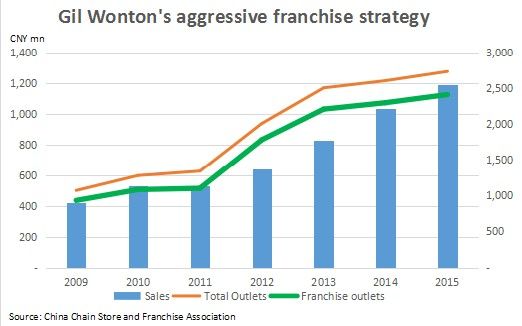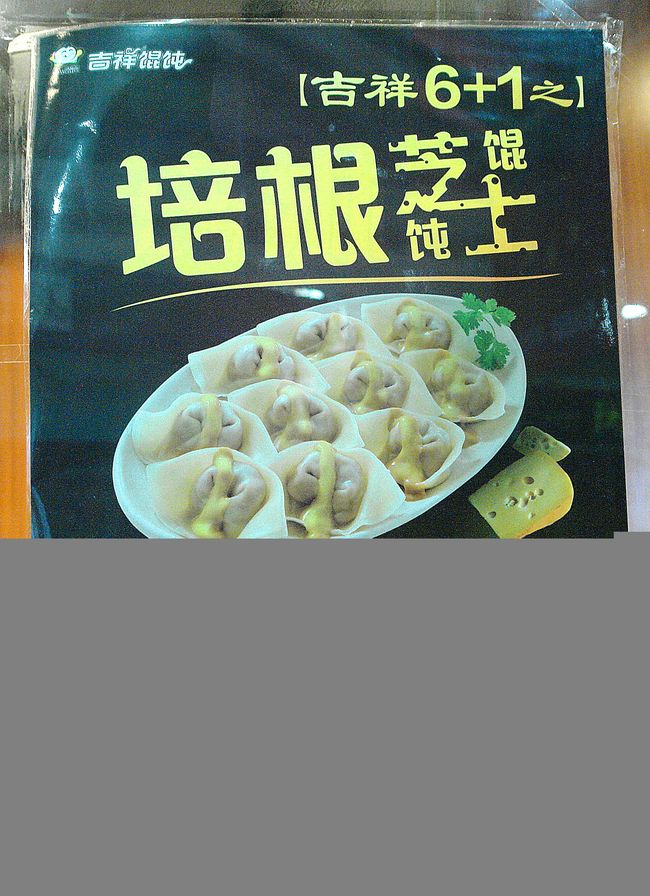Cheese is entering a new phase of market penetration in China as one major Chinese fast food chain is adopting it in a traditional food known as wonton, a kind of dumplings eaten with soup for some 2,000 years.
Gil Wonton (吉祥馄饨), the sixth largest Chinese fast food chain boasting sales of around CNY 1.2 bn (USD 171 mn) in 2015 according to China Chain Store and Franchise Association, is quietly promoting its cheese-flavoured wonton in its nearly 3,000 outlets in more than 40 cities in China. Promotion is going on concurrently in the online channel, such as Meituan and Dazhong Dianping.
The chain launched cheese-flavoured wonton in May 2016, but started putting up posters and offering special prices only entering 2017. The product, using bacon and cheese as main stuffing in thin wheat flour wrappers, is not boiled and served in soups (in bowls) like conventional wonton, but steamed and placed on a plate, and with salad sauce sprinkled on them.
The product has attracted some curious consumers to try it and reactions were mixed. In Dazhong Dianping, where consumers are encouraged to share their gourmet experiences, some "dislike it", others expressed varying degrees of appreciation. One wrote: "there was not enough bacon, the cheese flavour was not thick enough, but it's fun wonton can be made this way. It is quite delicious!" (馄饨里面的培根并不是很多,芝士味道也不算太浓,但是这样的吃法真的挺有意思的,挺好吃。)
Previously as much as some 80 per cent of cheese consumed in China was via bakeries, Western-style restaurants, cafes and bars. Fonterra claims that it supplies the bulk of mozzarella cheese for more than 300 million pizzas that's sold in China every year.
Small-packaging cheese on the retail channels are also enjoying strong sales, which mainly target children. The retail channel sales of cheese was believed to be around CNY 1 bn (USD 143 mn) last year. According to Kantar Worldpanel, cheese sales grew nine per cent during the year ending in November 2016, during which 14 per cent of urban households bought cheese, a ratio that represented an increase of only 0.4 percentage points year on year.
By using cheese as ingredient, Kantar said, Nabati of Indonesia soared into the top three imported brands in biscuits last year - 8.6 per cent of urban households bought Nabati waffles in the year ending November 2016, while a year earlier, only 3.4 per cent did.
If cheese has done magic to waffles as in the case of Nabati, will cheese do so to wonton?
Even without entering the Chinese food products, cheese is guaranteed to enjoy fast growth in China thanks to deepening penetration of Western style restaurants, cafes and bars. Joining foreigners who open such catering services are an increasing number of local Chinese across the country, even in remote places like Northwest China's Xinjiang. A growing number of food manufacturers such as Shanghai Chao Xiang Yuan Food (上海潮乡源) are also producing frozen pizzas to compete with Dr. Oetker, whose products are imported in China.
Now with cheese added into wonton, it is possible a domino effect will be set in motion across the rich repertoire of Chinese cuisine, but the next that are most prone to fall for cheese will be wonton's kinsmen - dumplings (饺子), baozi (包子), and pies with meat stuffings (馅饼). This forebodes more severe shortages for cheese, whose supplies are dominated by foreign companies such as Fonterra and President, as local supplies by Mengniu, Yili, Sanyuan and a few other brands are small and unsteady.
In 2015 Yili said it was going to substantially scale up its cheese production, drafting up various grand plans for the product, but three years later, there is no sign that it has done so, but instead, has joined the "mob" for imported cheese. At the end of 2016 Yili, the leading dairy company in China, launched a snack food that has minced fillet wrapped around sticks of imported cheese, including mozzarella from Germany, cheddar from Australia and gouda from The Netherlands. It used the service of a Shanghai virtual reality (VR) startup in a product introduction event.
If Yili has used cheese that is indeed imported, rather than of its own domestic production, it means that the China Dream of Cheese has most likely run up against a stone wall. So the burden - a burgeoning burden - of satisfying the vast range of traditional and aboriginal Chinese food for cheese has to rest on foreigners' shoulders.
If any foreign dairy companies are wondering what product to bring in China, it then appears only right to say "Cheese".
###
The author has three careers: journalistic writing, market research and consulting, and financial advisor. With the sensitivity and nose of a journalist who started his media career in the early 1990s, and an analytical and investigative instinct and tactics of an analyst, I write articles here on LinkedIn and ocassionally elsewhere, about trends and business model evolution in the FMCG industries.






